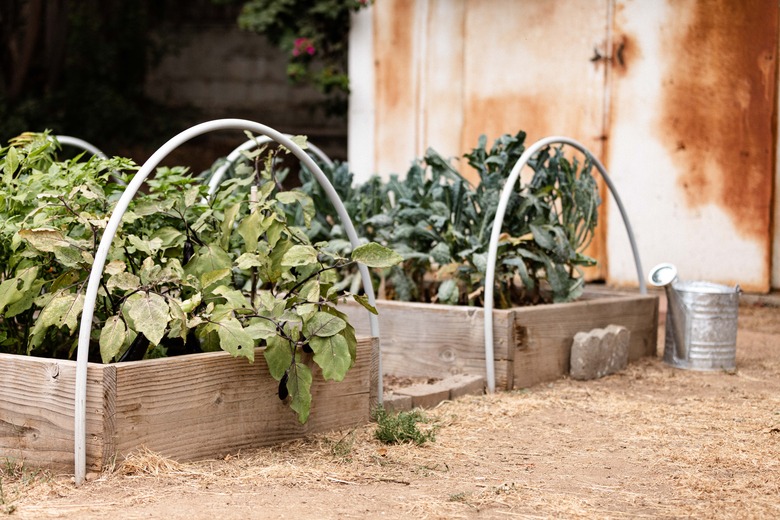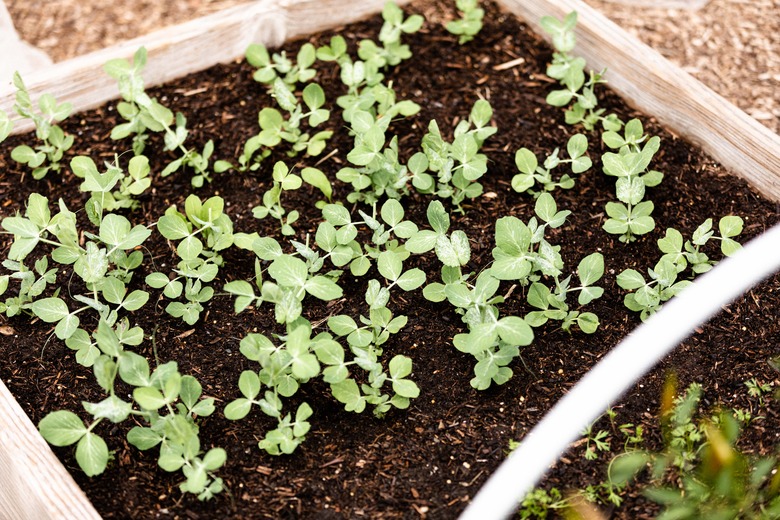Backyard And Garden Projects To Start On When You Need To Get Outside
We may receive a commission on purchases made from links.
Been a little cooped up indoors? We get it if you feel the need to get outside and breathe in some fresh air. Luckily, if you have a yard, patio, garden, or balcony, you have the space to get started on a project that'll keep you busy in a backyard-safe zone. Choose from one of these ideas below.
1) Plan and design a garden.
1) Plan and design a garden.
If you're thinking about creating a garden, you first need to plan and design it.
If you have a backyard, pick a relatively flat area that gets full sun and doesn't have any drainage issues. Decide how big of a plot you can dedicate to crops, and then pound stakes into the four corners and run a string around to mark the boundaries.
Use a shovel and hoe to turn the soil in the space, removing rocks and breaking up clumps of soil. Work in 2 or 3 inches of well-rotted or processed manure, peat moss, or organic compost to build humus in the soil. Once it's well-blended, rake the new garden until the soil surface is smooth.
Don't have the yard space? You can still easily create a container garden. Here, specifically, is how to plan a vegetable container garden.
2) Plant your garden.
2) Plant your garden.
Seeds are the least expensive way to proceed, but vegetable starter plants get you to the finish line faster. You can plant peas and sweet peas in the spring, as well as eggplant, cauliflower, leek, Brussels sprouts, onions, and radishes. If you want to include perennial vegetables, go for asparagus and artichokes.
After a couple of weeks, add spinach, chard, kale, and cabbage. It's fun to mix bright flowers like pansies into the flower beds, and many help to deter the pest population.
3) Weed last year's beds.
3) Weed last year's beds.
Whether you have waist-high weeds that require an electric whacker or just unwanted plants clogging the garden, there is something delightfully invigorating about weeding. You get to play in the dirt and fell your enemies at the same time. If you are weeding last year's garden beds, hands and knees is the most efficient way to go. You'll want to wear garden gloves and keep a garden fork or trowel handy.
The number one rule? Don't leave a single root in the ground. Grab an unwanted weed close to the soil and tug it right out, roots and all. Dig out any broken root pieces. This entire procedure is easier right after a rain, but you can also hose down the area and get the same result.
4) Rearrange your shrubs.
4) Rearrange your shrubs.
Transplanting shrubs is sort of like rearranging your living room. Things look different, and you don't have to spend a dime. Spring is the best time to transplant most bushes, shrubs, and even young trees since the soil is full of moisture and plants are ready, willing, and able to shoot up. Most bushes and shrubs can be transplanted successfully, but it's always the smaller the better.
Decide where you want to relocate a shrub before you start digging out the plant. Be sure the new spot gets proper sun exposure for the species and provides sufficient space for the mature size of the bush.
Dig deep and wide when you remove the plant from its current location, taking care to take as many roots with it as possible. Dig the new hole twice as large as the root system of the bush to be transplanted. Position the root ball in the new hole so that the shrub will sit at the same depth as in its prior position. Fill in the hole with garden soil and compost and tamp down the soil gently. Then water thoroughly.
5) Prepare for the birds.
5) Prepare for the birds.
You're never lonely when your backyard is filled with feathered friends. Now's the time to get things spiffy for them. Wash and scrub your bird bath to get out mold and toxins, then add sparkling clean water. If you feed your wild birds during the summer, fill up the feeders now.
Clean out the hummingbird feeders carefully. When mold develops in the feeders, the darting beauties can die. Calendar two cleanings a week during hummer season. Do a thorough bird-house cleaning too, removing all the old nesting materials, feathers, and detritus, then secure them to the trees or poles carefully.
6) Get that barbecue ready.
6) Get that barbecue ready.
If you've got food on your mind, you might prefer to turn your attention to the barbecue — even if it's just for a party of one, a party of two, or a family of four. You'll want your grill in tip-top shape when it comes time to use it. This involves two separate steps: a safety check and a deep cleaning.
If you own a propane grill, you'll want to check the tank for valve leaks. Just slosh some soapy water over the valve while it's turned on and look for bubbles. If bubbles appear, you'll have to repair or replace the valve. You can check the hose that connects the tank and the grill in the same way. If no bubbles show up, be sure to fill up the tank so you are ready to go.
To clean the grill, turn it on high for 10 to 15 minutes to burn off any bits left on the grill surface from last season. Use a wire brush to clean the particles from a metal grill. Use a cloth and soapy water to clean a porcelain surface. If necessary, let the grill rack soak in the sink for an hour and try again. Use the same cloth to wipe down the outside of your BBQ grill.
7) Start bulb planting.
7) Start bulb planting.
Despite the deceptive name, spring bulbs are planted in fall and bloom in March and April. But spring — after the final frost — is still a great time for planting bulbs for summer flowers.
All bulbs require well-draining soil, but some prefer sunny locations and others, shade. Sun-lovers include allium, calla lilies, dahlias, and iris. Begonias grow best in full or partial shade, as do caladium, gladiolas, lilies, and windflower. Plant bulbs every few weeks through the middle of June to ensure a continuous source of bloom.

